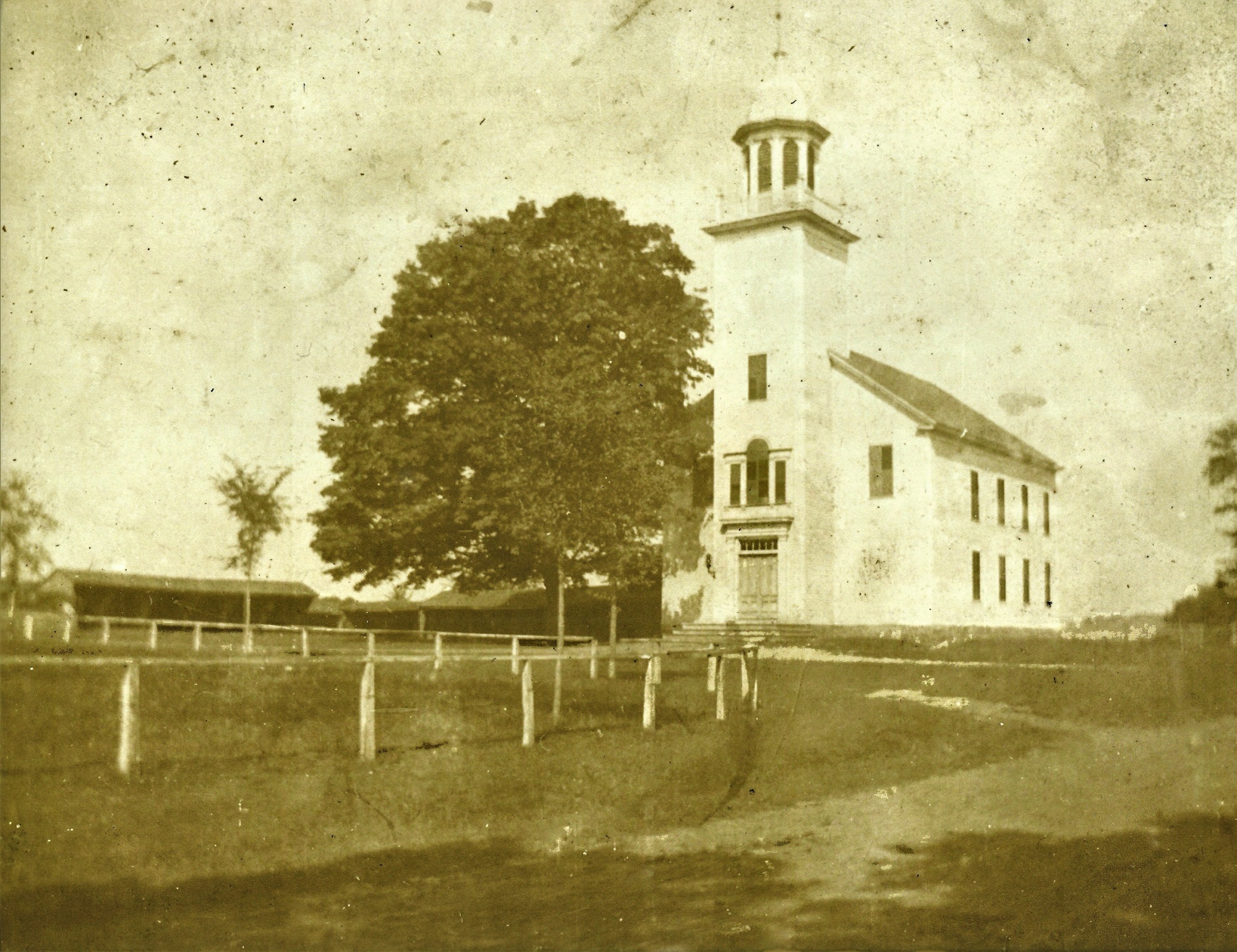By Priscilla Searles

Orange Congregational Church, one of the town’s oldest buildings. Photo from Photo courtesy of the Orange Historical Society collection.
Editor’s note: Orange Town Historian Priscilla Searles passed away shortly before the new year. This was her final contribution to the Milford-Orange Times. We give our deepest condolences to her family, and our deepest thanks to her for her long devotion to Orange as a journalist and historian.
With Orange’s 200th anniversary year coming to an end, it seems appropriate for me to close 2022 by bringing attention to the Orange Congregational Church.
In the earliest days of our community, residents traveled to Milford for church services – not an easy task in those days. In 1792 the Connecticut General Assembly granted a request permitting construction of a small meeting house in North Milford, now known as Orange. It was built on the northwestern corner of the Green, and services were shared with Milford.
Cutting through all the history involved in establishing a church, in 1804 a charter was granted for a new society. Erastus Scranton, a Yale student, was the first minister, serving that capacity for 22 years. He later donated the land that is now the south end of the Green.
By 1809 it became clear that the church had outgrown the small meeting house. Samuel Treat donated land just north of the Green, and $2,000 was raised by subscription for construction. David Hoadley was hired as designer. A 50-foot by 40-foot structure was planned, and in June 1810 the frame was raised in just four days. The dedication of the church building, then known as the Church of Christ in North Milford, was held on April 17, 1811.
The interior contained box pews, a high central pulpit and a gallery. The church bell not only served members but announced fires and other town events. Today, the Orange Congregational Church, United Church of Christ, remains largely as it was on the outside, with changes made over time to the interior.
Note the horse sheds in the photo to the left of the church, which were constructed in 1838. They helped keep the horses warm during long winter Sunday sermons. The last sheds were torn down in 1933.